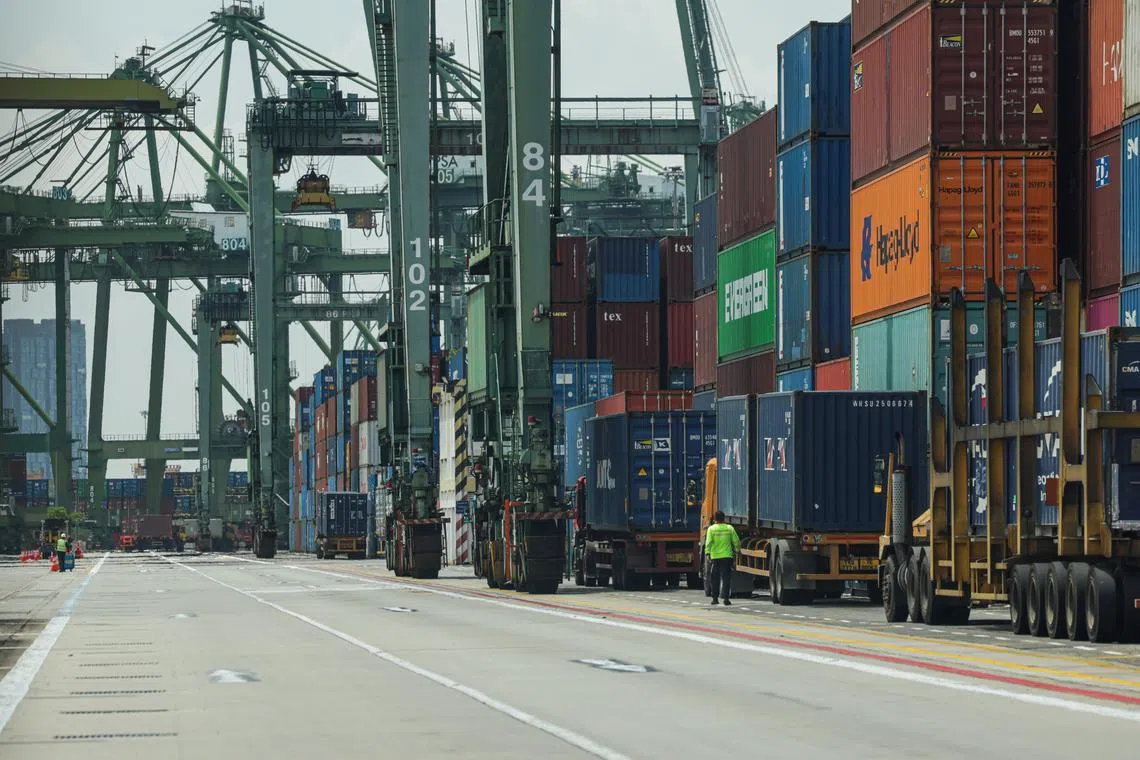Singapore key exports rise 7.1% in Q2 but full-year forecast unchanged as tariff fears simmer
Sign up now: Get ST's newsletters delivered to your inbox

Singapore’s tariff rate stays at 10 per cent, but its key pharmaceutical and semiconductor exports may face much higher sectoral levies.
ST PHOTO: GIN TAY
Follow topic:
SINGAPORE – Singapore’s key exports kept up their growth momentum in the second quarter of 2025, aided by the front-loading of orders before the latest US tariffs took effect.
Non-oil domestic exports (Nodx) expanded 7.1 per cent over the period from a year ago, building on the 3.3 per cent growth in the first quarter.
Even so, officials warned that US tariffs continue to pose a large risk, with countries anticipating the Trump administration’s next moves.
“Continued economic uncertainty amidst the evolving tariff situation could dampen demand from key trading partners. Meanwhile, sector-specific tariff risks remain,” Enterprise Singapore said in a statement on Aug 12.
The front-loading effect, in which buyers place orders in advance in anticipation of higher tariffs, is also expected to dissipate in the coming months, now that US reciprocal tariffs have kicked in on Aug 7, said the trade agency.
Thus, it still expects growth in key exports to come in at the lower end of its 1 per cent to 3 per cent forecast in 2025.
This comes as the Ministry of Trade and Industry raised its growth forecast for 2025
The US on Aug 11 also extended its tariff truce with China for another 90 days, just hours before much higher tariffs were due to kick in.
But a new sweep of reciprocal US tariffs had already taken effect on Aug 7, hitting other countries in the region.
Singapore’s tariff rate of 10 per cent has been unchanged since April, but its key pharmaceutical and semiconductor exports remain under threat of much higher sectoral levies.
In the second quarter, Singapore saw the biggest pickup in Nodx to Taiwan, Indonesia and South Korea.
Overall exports of electronics jumped 10.5 per cent, while those of non-electronic products grew 6 per cent in the second quarter from a year earlier.
However, the subdued full-year forecast for Nodx takes into consideration “the expected fading of front-loading effects”, said OCBC Bank chief economist Selena Ling.
She added: “The looming 100 per cent semiconductor tariffs threatened by the US may take some wind out of the sails for key chip-production hubs, including Taiwan, South Korea and Singapore.”
Nodx growth was also supported by the exports of non-monetary gold, which jumped 82.5 per cent in the second quarter.
Personal computer exports surged 78 per cent, while integrated circuits rose 13.9 per cent over the same period.
More broadly, Nodx grew 5.2 per cent in the first half of 2025 from a year ago. This was most likely supported by front-loading, according to Enterprise Singapore.

